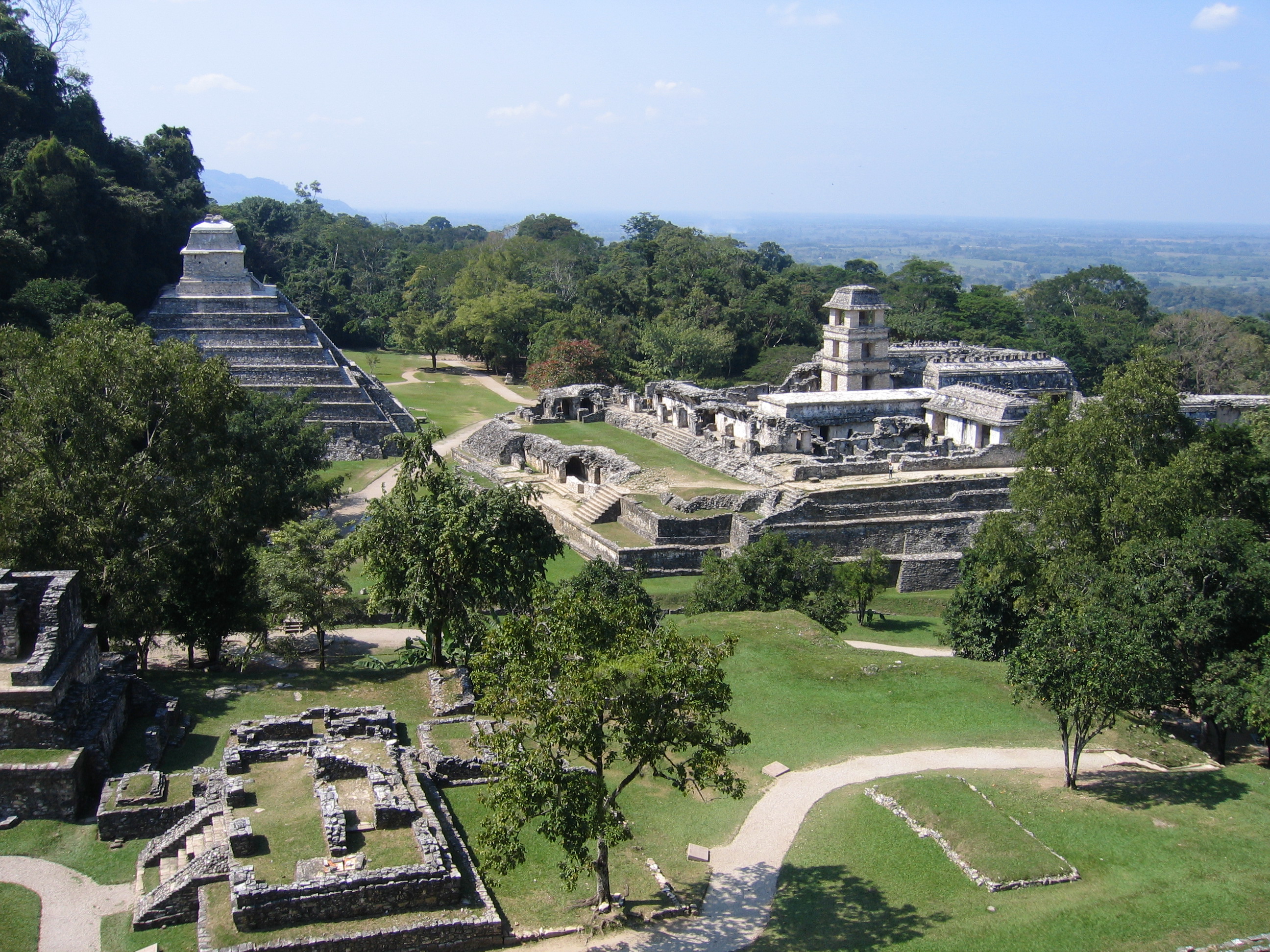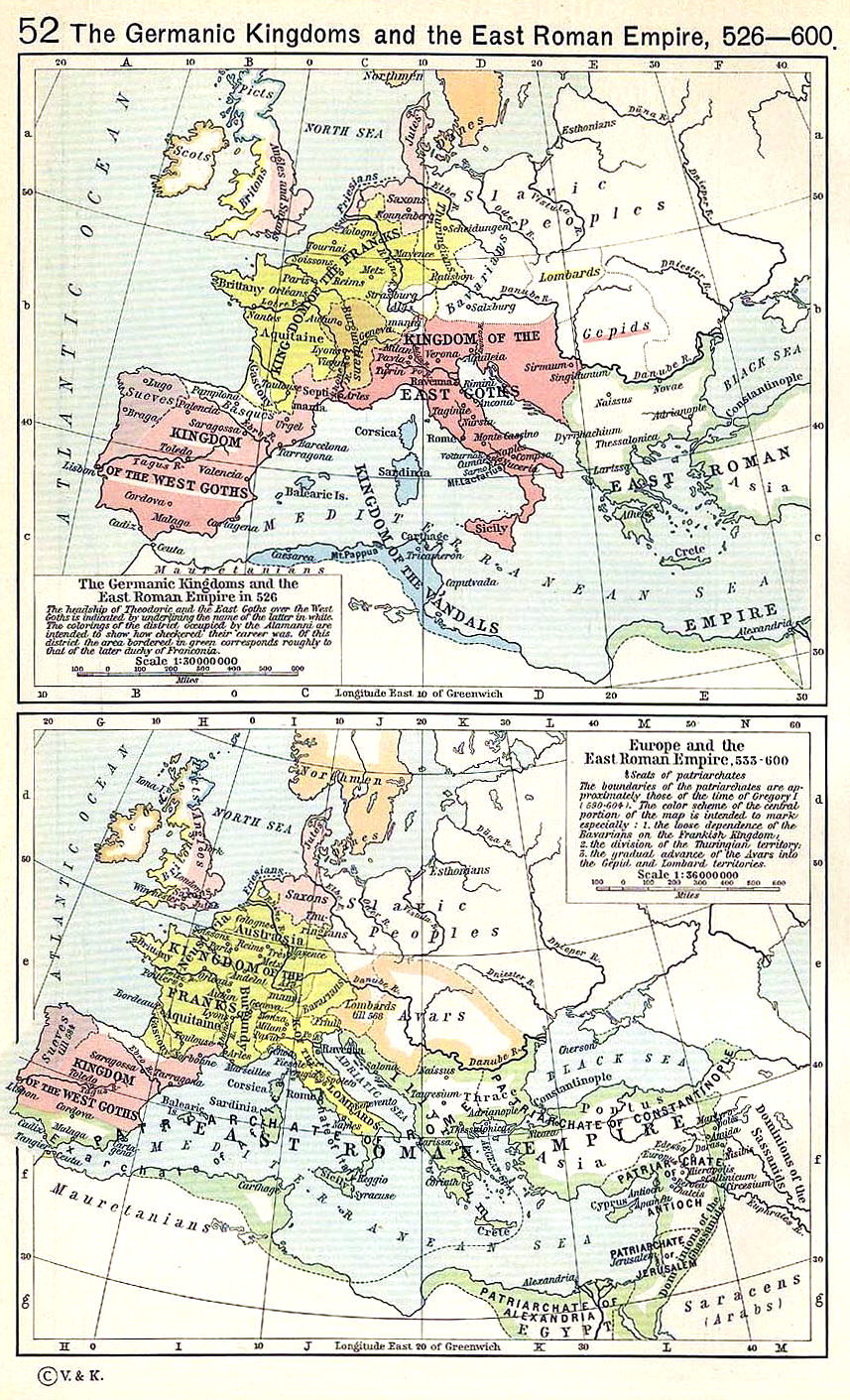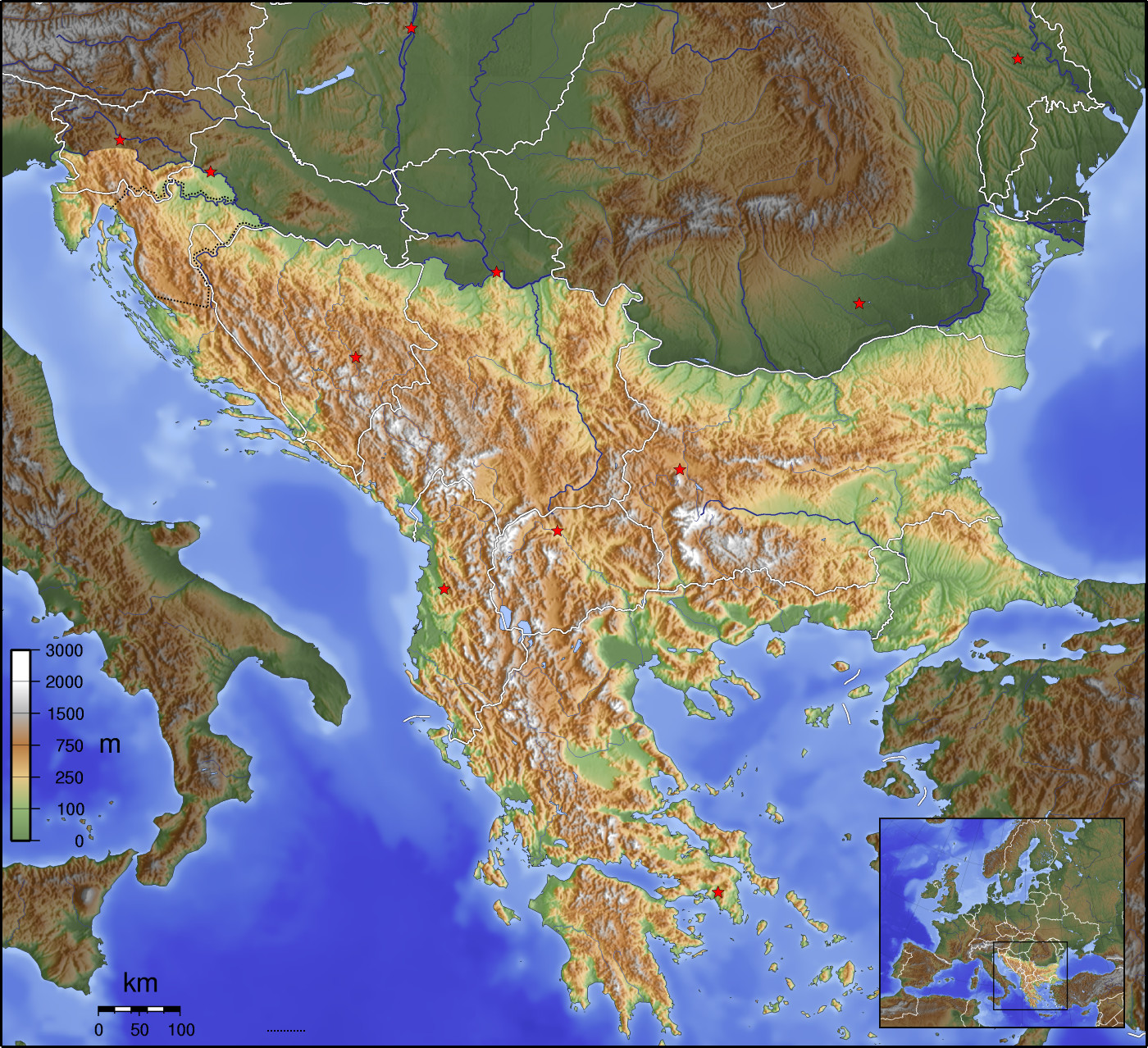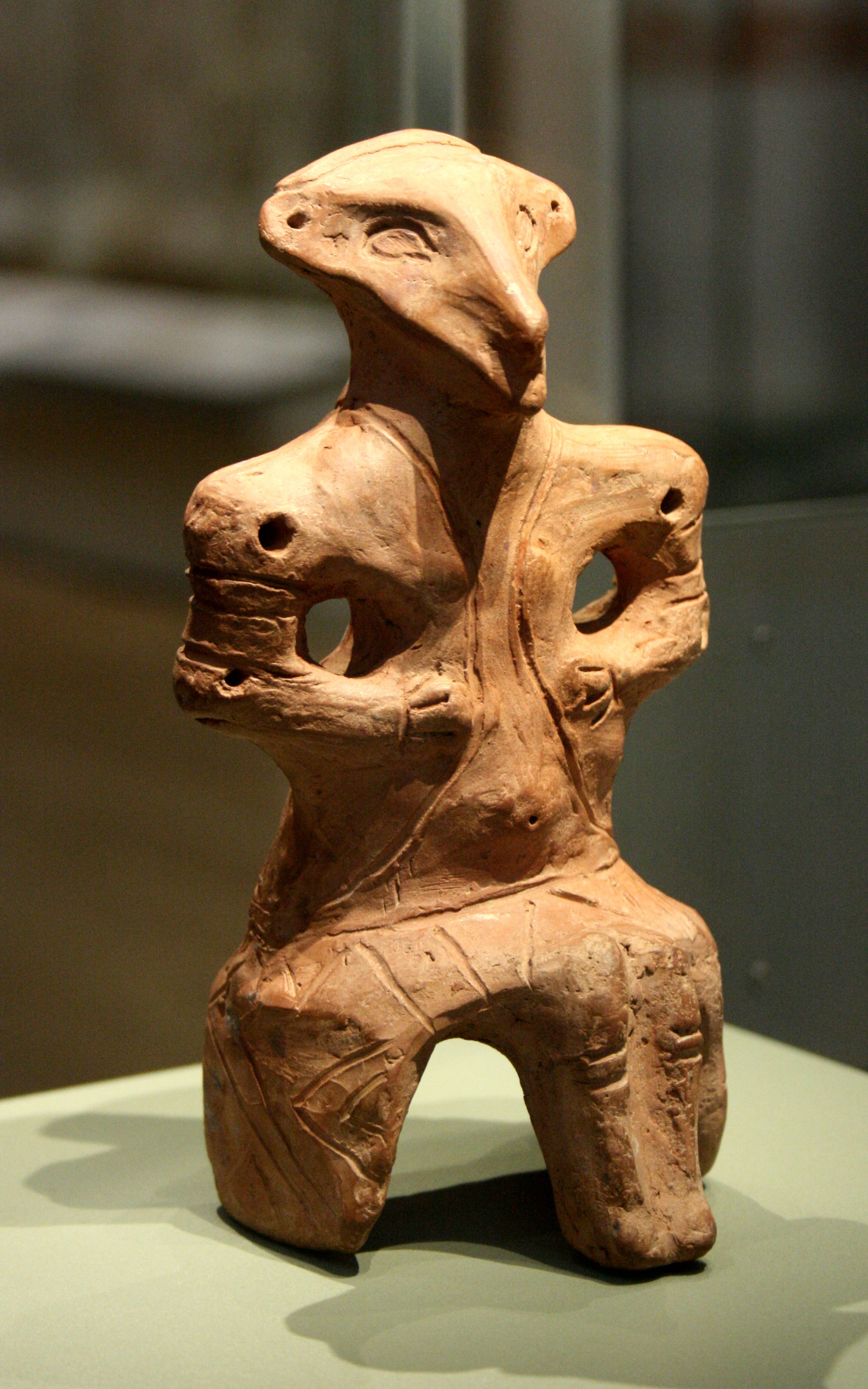|
599
__NOTOC__ Year 599 (Roman numerals, DXCIX) was a common year starting on Thursday of the Julian calendar. The denomination 599 for this year has been used since the early medieval period, when the Anno Domini calendar era became the prevalent method in Europe for naming years. Events By place Byzantine Empire * Emperor Maurice (emperor), Maurice refuses to pay ransom for 12,000 Byzantine Empire, Byzantine soldiers taken prisoner by the Avars (Carpathians), Avars. Their leader Bayan I orders the execution of the prisoners, and slaughters them all. His failure to buy back the captives destroys Maurice's popularity with the Byzantine troops in the Balkans, Balkan Peninsula. * Summer – Maurice's Balkan campaigns#Renewed campaigns, 597–602, Balkan Campaign: The Byzantine generals Priscus (magister militum), Priscus and Comentiolus join their forces at Singidunum (modern Belgrade), and move downstream to the fortress city of Viminacium (Serbia). The Byzantine Greeks, ... [...More Info...] [...Related Items...] OR: [Wikipedia] [Google] [Baidu] |
Maurice's Balkan Campaigns
Maurice's Balkan campaigns were a series of military expeditions conducted by Byzantine emperor, Roman Emperor Maurice (emperor), Maurice (reigned 582–602) in an attempt to defend the Balkans, Balkan provinces of the Byzantine Empire, Roman Empire from the Pannonian Avars, Avars and the South Slavs. Maurice was the only East Roman emperor, other than Anastasius I (emperor), Anastasius I, who did his best to implement determined Balkan policies during Late Antiquity by paying adequate attention to the safety of the northern frontier against barbarian incursions. During the second half of his reign, the Balkan campaigns were the main focus of Maurice's foreign policies, as a favourable peace treaty with Sasanian Empire, Persian Empire in 591 enabled him to shift his experienced troops from the Persian front to the region. The refocusing of Roman efforts soon paid off: the frequent Roman failures before 591 were succeeded by a string of successes afterwards. Although it is widely be ... [...More Info...] [...Related Items...] OR: [Wikipedia] [Google] [Baidu] |
Battles Of Viminacium
The Battles of Viminacium were a series of three battles fought against the Avars by the Eastern Roman Empire. They were decisive Roman successes, which were followed by an invasion of Pannonia. In summer 599, the East Roman Emperor Maurice sent his generals Priscus and Comentiolus to the Danube front against the Avars. The generals joined their forces at Singidunum and advanced together down the river to Viminacium. The Avar '' khagan'' Bayan I meanwhile - learning that the Romans had determined to violate the peace - crossed the Danube at Viminacium and invaded Moesia Prima, while he entrusted a large force to four of his sons, who were directed to guard the river and prevent the Romans from crossing over to the left bank. In spite of the presence of the Avar army, however, the Byzantine army crossed on rafts and pitched a camp on the left side, while the two commanders sojourned in the town of Viminacium, which stood on an island in the river. Here Comentiolus is sai ... [...More Info...] [...Related Items...] OR: [Wikipedia] [Google] [Baidu] |
Serbia
, image_flag = Flag of Serbia.svg , national_motto = , image_coat = Coat of arms of Serbia.svg , national_anthem = () , image_map = , map_caption = Location of Serbia (green) and the claimed but uncontrolled territory of Kosovo (light green) in Europe (dark grey) , image_map2 = , capital = Belgrade , coordinates = , largest_city = capital , official_languages = Serbian language, Serbian , ethnic_groups = , ethnic_groups_year = 2022 , religion = , religion_year = 2022 , demonym = Serbs, Serbian , government_type = Unitary parliamentary republic , leader_title1 = President of Serbia, President , leader_name1 = Aleksandar Vučić , leader_title2 = Prime Minister of Serbia, Prime Minister , leader_name2 = Đuro Macut , leader_title3 = Pres ... [...More Info...] [...Related Items...] OR: [Wikipedia] [Google] [Baidu] |
Maurice (emperor)
Maurice (; ; 539 – 27 November 602) was Eastern Roman emperor from 582 to 602 and the last member of the Justinian dynasty. A successful general, Maurice was chosen as heir and son-in-law by his predecessor Tiberius II. Maurice's reign was troubled by almost constant warfare. After he became emperor, he brought the Byzantine–Sasanian War of 572–591, war with Sasanian Persia to a Battle of the Blarathon, victorious conclusion. The empire's eastern border in the South Caucasus was vastly expanded and, for the first time in nearly two centuries, the Romans were no longer obliged to pay the Persians thousands of pounds of gold annually for peace. Afterward, Maurice Maurice's Balkan campaigns, campaigned extensively in the Balkans against the Pannonian Avars, Avars—pushing them back across the Danube by 599. He also conducted campaigns across the Danube, the first Roman emperor to do so in over two centuries. In the west, he established two large semi-autonomous provinces ... [...More Info...] [...Related Items...] OR: [Wikipedia] [Google] [Baidu] |
Palenque 8
Palenque (; Yucatec Maya: ), also anciently known in the Itza Language as Lakamha ("big water" or "big waters"), was a Maya city-state in southern Mexico that perished in the 8th century. The Palenque ruins date from ca. 226 BC to ca. 799 AD. After its decline, it was overgrown by the jungle of cedar, mahogany, and sapodilla trees, but has since been excavated and restored. It is located near the Usumacinta River in the Mexican state of Chiapas, about south of Ciudad del Carmen, above sea level. It is adjacent to the modern town of Palenque, Chiapas. It averages a humid with roughly of rain a year. Palenque is a medium-sized site, smaller than Tikal, Chichen Itza, or Copán, but it contains some of the finest architecture, sculpture, roof comb and bas-relief carvings that the Mayas produced. Much of the history of Palenque has been reconstructed from reading the hieroglyphic inscriptions on the many monuments; historians now have a long sequence of the ruling dynasty o ... [...More Info...] [...Related Items...] OR: [Wikipedia] [Google] [Baidu] |
Avars (Carpathians)
The Pannonian Avars ( ) were an alliance of several groups of Eurasian nomads of various origins. The peoples were also known as the Obri in the chronicles of the Rus, the Abaroi or Varchonitai (), or Pseudo-Avars in Byzantine sources, and the Apar () to the Göktürks. They established the Avar Khaganate, which spanned the Pannonian Basin and considerable areas of Central and Eastern Europe from the late 6th to the early 9th century. The name Pannonian Avars (after the area in which they settled) is used to distinguish them from the Avars of the Caucasus, a separate people with whom the Pannonian Avars may or may not have had links. Although the name ''Avar'' first appeared in the mid-5th century, the Pannonian Avars entered the historical scene in the mid-6th century, on the Pontic–Caspian steppe as a people who wished to escape the rule of the Göktürks. They are probably best known for their invasions and destruction in the Avar–Byzantine wars from 568 to 626 and in ... [...More Info...] [...Related Items...] OR: [Wikipedia] [Google] [Baidu] |
Balkans
The Balkans ( , ), corresponding partially with the Balkan Peninsula, is a geographical area in southeastern Europe with various geographical and historical definitions. The region takes its name from the Balkan Mountains that stretch throughout the whole of Bulgaria. The Balkan Peninsula is bordered by the Adriatic Sea in the northwest, the Ionian Sea in the southwest, the Aegean Sea in the south, the Turkish straits in the east, and the Black Sea in the northeast. The northern border of the peninsula is variously defined. The highest point of the Balkans is Musala, , in the Rila mountain range, Bulgaria. The concept of the Balkan Peninsula was created by the German geographer August Zeune in 1808, who mistakenly considered the Balkan Mountains the dominant mountain system of southeastern Europe spanning from the Adriatic Sea to the Black Sea. In the 19th century the term ''Balkan Peninsula'' was a synonym for Rumelia, the parts of Europe that were provinces of the Ottoman E ... [...More Info...] [...Related Items...] OR: [Wikipedia] [Google] [Baidu] |
Belgrade
Belgrade is the Capital city, capital and List of cities in Serbia, largest city of Serbia. It is located at the confluence of the Sava and Danube rivers and at the crossroads of the Pannonian Basin, Pannonian Plain and the Balkan Peninsula. The population of the Belgrade metropolitan area is 1,685,563 according to the 2022 census. It is one of the Balkans#Urbanization, major cities of Southeast Europe and the List of cities and towns on the river Danube, third-most populous city on the river Danube. Belgrade is one of the List of oldest continuously inhabited cities, oldest continuously inhabited cities in Europe and the world. One of the most important prehistoric cultures of Europe, the Vinča culture, evolved within the Belgrade area in the 6th millennium BC. In antiquity, Thracians, Thraco-Dacians inhabited the region and, after 279 BC, Celts settled the city, naming it ''Singidunum, Singidūn''. It was Roman Serbia, conquered by the Romans under the reign of Augustus and ... [...More Info...] [...Related Items...] OR: [Wikipedia] [Google] [Baidu] |
Priscus (magister Militum)
Priscus or Priskos (; died 613) was a leading Eastern Roman general during the reigns of the Byzantine emperors Maurice (reigned 582–602), Phocas (r. 602–610) and Heraclius (r. 610–641). Priscus comes across as an effective and capable military leader, although the contemporary sources are markedly biased in his favour. Under Maurice, he distinguished himself in the campaigns against the Avars and their Slavic allies in the Balkans. Absent from the capital at the time of Maurice's overthrow and murder by Phocas, he was one of the few of Maurice's senior aides who were able to survive unharmed into the new regime, remaining in high office and even marrying the new emperor's daughter. Priscus, however, also negotiated with and assisted Heraclius in the overthrow of Phocas, and was entrusted with command against the Persians in 611–612. After the failure of this campaign, he was dismissed and tonsured. He died shortly after. Biography Under Maurice Priscus first appear ... [...More Info...] [...Related Items...] OR: [Wikipedia] [Google] [Baidu] |
Viminacium
Viminacium (also ''Viminatium)'' was a major city, military camp, and the capital of the Roman Empire, Roman province of Moesia (modern-day Serbia). Following the division of Moesia in 87, following Domitian's Domitian's Dacian War, Dacian War, it became the capital of Moesia Superior. As of 2018, only 3-4% of the site has been explored. The site is located from the modern town of Kostolac in Eastern Serbia. The city dates back to the 1st century AD, and at its peak it is believed to have had 40,000 inhabitants, making it one of the biggest cities in the Balkans of that time. It lies on the Roman road ''Via Militaris''. Viminacium was devastated by Huns in the 5th century, but was later rebuilt by Justinian. It was completely destroyed with the Migration Period, arrival of Slavs in the 6th century. Today, the archaeological site occupies a total of , and contains remains of temples, streets, squares, amphitheatres, palaces, hippodromes and Roman baths. Viminacium holds ... [...More Info...] [...Related Items...] OR: [Wikipedia] [Google] [Baidu] |
Byzantine Empire
The Byzantine Empire, also known as the Eastern Roman Empire, was the continuation of the Roman Empire centred on Constantinople during late antiquity and the Middle Ages. Having survived History of the Roman Empire, the events that caused the fall of the Western Roman Empire in the 5th centuryAD, it endured until the fall of Constantinople to the Ottoman Empire in 1453. The term 'Byzantine Empire' was coined only after its demise; its citizens used the term 'Roman Empire' and called themselves 'Romans'. During the early centuries of the Roman Empire, the western provinces were Romanization (cultural), Latinised, but the eastern parts kept their Hellenistic culture. Constantine the Great, Constantine I () legalised Christianity and moved the capital to Constantinople. Theodosius I, Theodosius I () made Christianity the state religion and Greek gradually replaced Latin for official use. The empire adopted a defensive strategy and, throughout its remaining history, expe ... [...More Info...] [...Related Items...] OR: [Wikipedia] [Google] [Baidu] |
Common Year Starting On Thursday
A common year starting on Thursday is any non-leap year (i.e. a year with 365 days) that begins on Thursday, 1 January, and ends on Thursday, 31 December. Its dominical letter hence is D. The most recent year of such kind was 2015, and the next one will be 2026 in the Gregorian calendar or, likewise, 2021 and 2027 in the obsolete Julian calendar, see below for more. This is the only common year with three occurrences of Friday the 13th: those three in this common year occur in February, March, and November. Leap years starting on Sunday share this characteristic, for the months January, April and July. From February until March in this type of year is also the shortest period (one month) that runs between two instances of Friday the 13th. Additionally, this is the one of only two types of years overall where a rectangular February is possible, in places where Sunday is considered to be the first day of the week. Common years starting on Friday share this characteristic ... [...More Info...] [...Related Items...] OR: [Wikipedia] [Google] [Baidu] |







